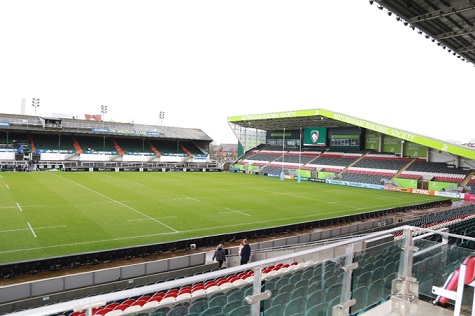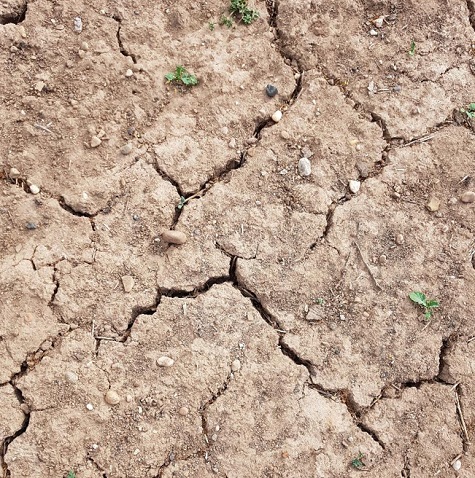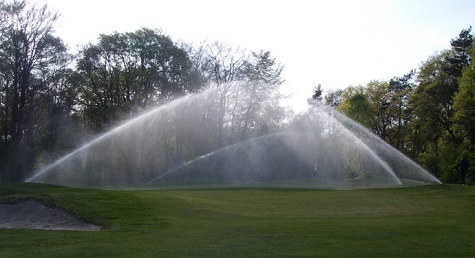We are now entering a new phase of the Covid-19 situation, with the new test, track and chase, programme coming into effect. Alongside this, the government’s Secretary of State for Digital, Culture, Media and Sport, Oliver Dowden, announced on Saturday that there can be a return of domestic competitive sport behind closed doors, from today (June 1st). The 'phase three' guidance paves the way for live sport to return for the first time since mid-March.
It is up to individual sports to assess the risk, and consult athletes, coaches and support staff.
Horse racing and snooker can each resume competitive action on today, while the Premier League is due to restart on 17 June.
As for sport and recreation, we are seeing and hearing more reports of sports and pastimes coming back online, as long as social distancing measures can be adhered to.
A meeting I had in my role as VPA for the RFU last week, enlightened me to the fact that there’s still a lot of work and discussions to take place before we see a return to rugby being played - merely on the fact that it’s a close contact game.

However, the RFU are giving out advice to clubs regarding the potential opening up of clubhouses and use of facilities.
I read in the press that World Rugby - the game's governing body - has taken steps to help mitigate the risk to players at both the elite and community level.
This could see a clampdown on the number of scrum resets and stricter enforcements over high tackles - which often lead to face-to-face contact - as well as time spent in rucks and mauls.
Among the hygiene measures being considered are the changing and washing of the ball, regular use of hand sanitiser before, during and after matches, changing shirts and head-gear at half-time, and limiting the time teams spend at a ground before a match.
While there are no plans yet to restart the community game in any territory, New Zealand rugby is set to launch an internal competition in the middle of June, while the Pro 14 is aiming to resume derby matches from 22 August.
The English Premiership has yet to map out their return to action but hopes to resume training in June. As for football some Premiership clubs are resuming training with an aim to play their first behind closed doors matches on 17 June.
I am sure there will be plenty of professional football clubs interested to see how this plays out and hopefully all will be around to see the start of next year’s football season.
Another worrying report seen on the BBC Sports website stated that Huddersfield owner Phil Hodgkinson thinks as many as "50 or 60" clubs could go bust due to Covid-19. “English football's pyramid will be destroyed unless the game starts to plan for the financial impact of Covid-19 beyond the 2019-20 season,” he is quoted. He says he is looking at a "worst-case scenario" of no fans allowed in stadiums for the 2020-21 season.
This year continues to throw up new challenges. First we had the floods, then Covid-19 and now we are entering a possible drought.
Since March we have had exceptionally dry, warm weather, which under the current lockdown, has certainly helped us cope with maintaining our health and wellbeing. It would seem our summer has arrived two months early. June usually signifies the start of our summer season (June, July, August). However, over the last eight weeks we have seen a long period of dry, warm weather.
The rate of grass growth has notably been slowed down by this warm weather and in some areas of the country, they are now talking of drought conditions and looking at possible hose pipe bans.
Our soils are drying out at an alarming rate as you can see from the picture below that I took on a recent walk.

These dry current conditions will indeed initiate the need to irrigate our playing surfaces - however this can only be achieved if you have the appropriate water resources and equipment to apply water efficiently. Water is becoming a precious resource and we need to be responsible in its use and not waste it.
With the spring heat stress resulting in pitches, courses and courts across the country looking like July we caught up with Alastair Higgs, Rain Bird’s golf district manager for UK, Ireland & Iceland.
Alasataie gave us the following advice:
“The summer of 2018 is still fresh in the memory with all the issues it caused to the turf industry without efficient irrigation. It effected turf managers right across the UK with surfaces being under stress and underperforming with increased costs of water, electricity and remedial actions like hand watering and other cultural / chemical practices. The players also had their games effected and sometimes even cancelled. We are already seeing increased stress in 2020 which if it continues could even surpass that of 2018. Weather data on sites across the UK is consistently showing less or similar rainfall year to date than in the same months of 2018 despite the heavy rain in the early months. In May well over 100mm ET deficit has put turf grass under stress.

“Applied vs useable water is a very good subject to consider right now with the ground become harder and water looking like becoming ever more precious resource as we head from spring into summer 2020.
“By considering the application of water in volume rather than minutes, we can fully consider the importance of applied versus useable water. How much of the water applied is actually being used by the turf? If your control system has a Cycle + Soak feature enabled, you have a significant tool for preventing water waste and saving money. It allows the user to precisely schedule and apply irrigation to be consistent with the infiltration rate of the soil in each specific area.
"The soak time enables water to be absorbed into the surface reducing wasteful run-off.”
5 ways to improve irrigation on your turf

Ensure your rotors and nozzles are consistent
This ensures uniformity in the volume of water applied. Check regularly for damaged or non-uniform nozzles as several out of action on the course will make a significant difference to coverage and ground conditions. When replacing them, try and ensure zones are consistent; don’t mix and match nozzle types in a zone if that can be avoided.
Ensure the rotor settings are correct
Incorrectly set rotors can result in loss of performance of up to 60%. Check the head levels with a spirit level. Rotors tops should sit parallel to the playing surface and a slight tilt of just a few degrees will affect coverage. Ground moves over time and rotor positions can be damaged by machinery, affecting the height, level and performance.
Conduct an irrigation audit on your worst area
Even small environmental or mechanical changes can result in water being applied ineffectively. Are there areas of your site where you are regularly hand watering? Conduct a before-and-after audit on your worst area to ensure the pressure is correct for the set spacing. This will provide data that demonstrates the importance of regular maintenance and consistent monitoring in order to deliver optimum results from your system.
Create management zones and understand their needs
Set up area-specific management zones for your site for different microclimates, turfgrass and soil types, to ensure evapotranspiration data is managed efficiently. Use accurate soil moisture sensors to monitor moisture levels, enabling you to irrigate to target volumetric water content in each zone.
Be proactive with your maintenance
A planned approach can help identify issues before they result in costly breakdowns, repairs and replacement. Many irrigation systems have a raft of features and are often underutilised. Ask the manufacturer and look out for training events and seminars in your area and at trade shows which focus on improving irrigation system efficiency. When your software’s working as hard as you do, it becomes a really valuable member of your team.
Alastair Higgs can be contacted at: ahiggs@rainbird.eu
I personally think that sports clubs at all levels should now start thinking about investing in efficient watering systems to aid the maintenance and management of their facilities. Especially as I have read an interesting article that stated our country is in danger of experiencing regular drought conditions withing the next twenty years.
The National Audit Office (NAO), in a report published last Wednesday, says some parts of England, especially the south-east, are at risk of running out of water owing to decreased rainfall and a need to cut the amount taken from natural waterways.
Water companies will have to reduce the quantity of water they take out of rivers, lakes and the ground by more than 1bn litres a day, creating huge shortfalls in the coming decades, the NAO warned.
Parliament’s auditor predicted that 4bn litres of additional water supply would be needed each day by 2050 to counter the growing risk of drought from the climate emergency.